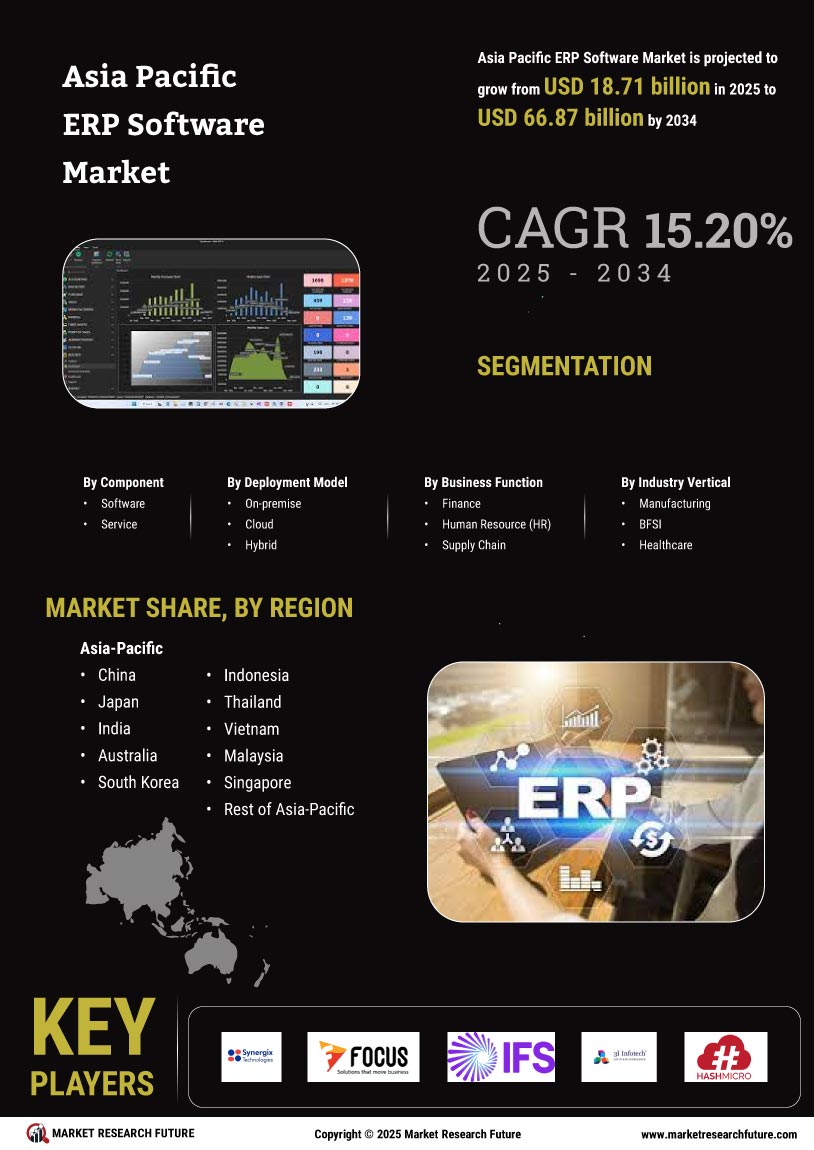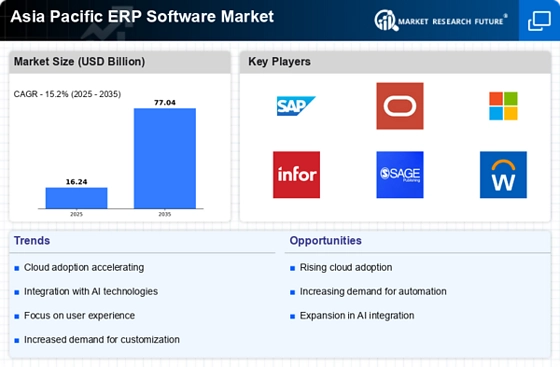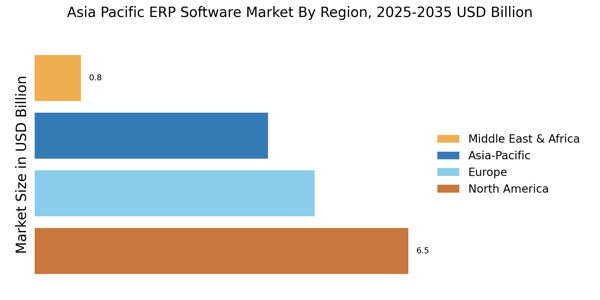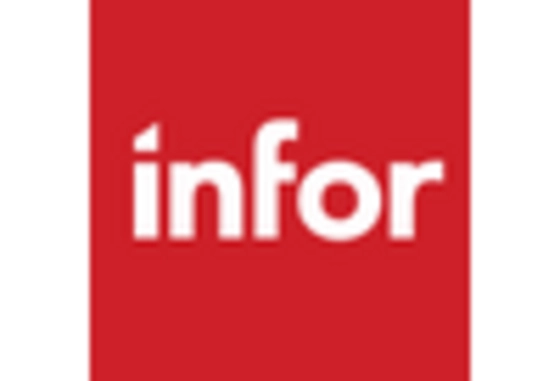The Asia Pacific ERP Software Market is currently characterized by a dynamic competitive landscape, driven by rapid technological advancements and increasing demand for integrated business solutions. Major players such as SAP (DE), Oracle (US), and Microsoft (US) are at the forefront, each adopting distinct strategies to enhance their market presence. SAP (DE) focuses on innovation through its cloud-based solutions, aiming to streamline operations for businesses across various sectors. Oracle (US), on the other hand, emphasizes strategic partnerships and acquisitions to bolster its product offerings, while Microsoft (US) leverages its extensive ecosystem to integrate ERP solutions with other enterprise applications, thereby enhancing user experience and operational efficiency. Collectively, these strategies contribute to a competitive environment that is increasingly centered around digital transformation and customer-centric solutions.
In terms of business tactics, companies are increasingly localizing their operations to better cater to regional markets, optimizing supply chains to enhance efficiency and responsiveness. The competitive structure of the Asia Pacific ERP Software Market appears moderately fragmented, with a mix of established players and emerging startups vying for market share. This fragmentation allows for diverse offerings, yet the influence of key players remains substantial, shaping market trends and customer expectations.
In August 2025, SAP (DE) announced a strategic partnership with a leading AI firm to enhance its ERP solutions with advanced analytics capabilities. This move is likely to position SAP as a frontrunner in the integration of AI within ERP systems, potentially offering clients more robust data-driven insights and decision-making tools. Such advancements may significantly enhance customer satisfaction and operational efficiency, reinforcing SAP's competitive edge in the market.
Similarly, in September 2025, Oracle (US) completed the acquisition of a regional ERP provider, which is expected to expand its footprint in the Asia Pacific region. This acquisition not only broadens Oracle's product portfolio but also allows for localized solutions tailored to specific market needs. The strategic importance of this move lies in Oracle's ability to leverage existing customer relationships and enhance service delivery, thereby solidifying its market position.
In October 2025, Microsoft (US) launched a new initiative aimed at integrating sustainability metrics into its ERP solutions. This initiative reflects a growing trend towards sustainability in business practices, aligning with global efforts to promote environmentally responsible operations. By embedding sustainability into its offerings, Microsoft is likely to attract a broader customer base that prioritizes corporate social responsibility, thus enhancing its competitive differentiation.
As of October 2025, the competitive trends in the Asia Pacific ERP Software Market are increasingly defined by digitalization, sustainability, and the integration of artificial intelligence. Strategic alliances are playing a crucial role in shaping the landscape, enabling companies to pool resources and expertise to deliver innovative solutions. Looking ahead, it appears that competitive differentiation will evolve from traditional price-based competition to a focus on innovation, technological advancement, and supply chain reliability, as businesses seek to navigate an increasingly complex market environment.


















Leave a Comment